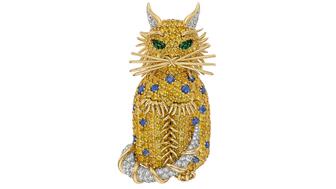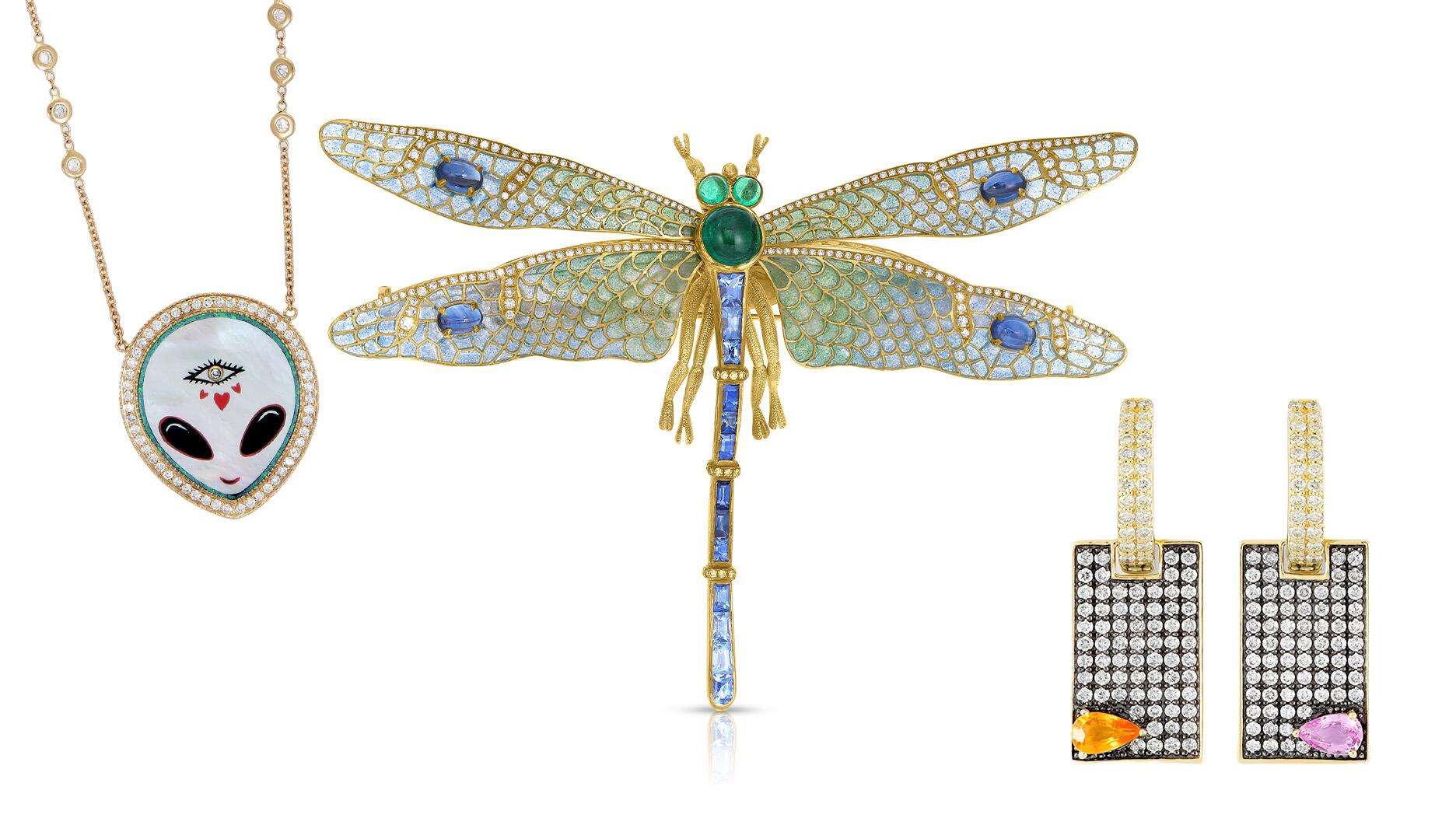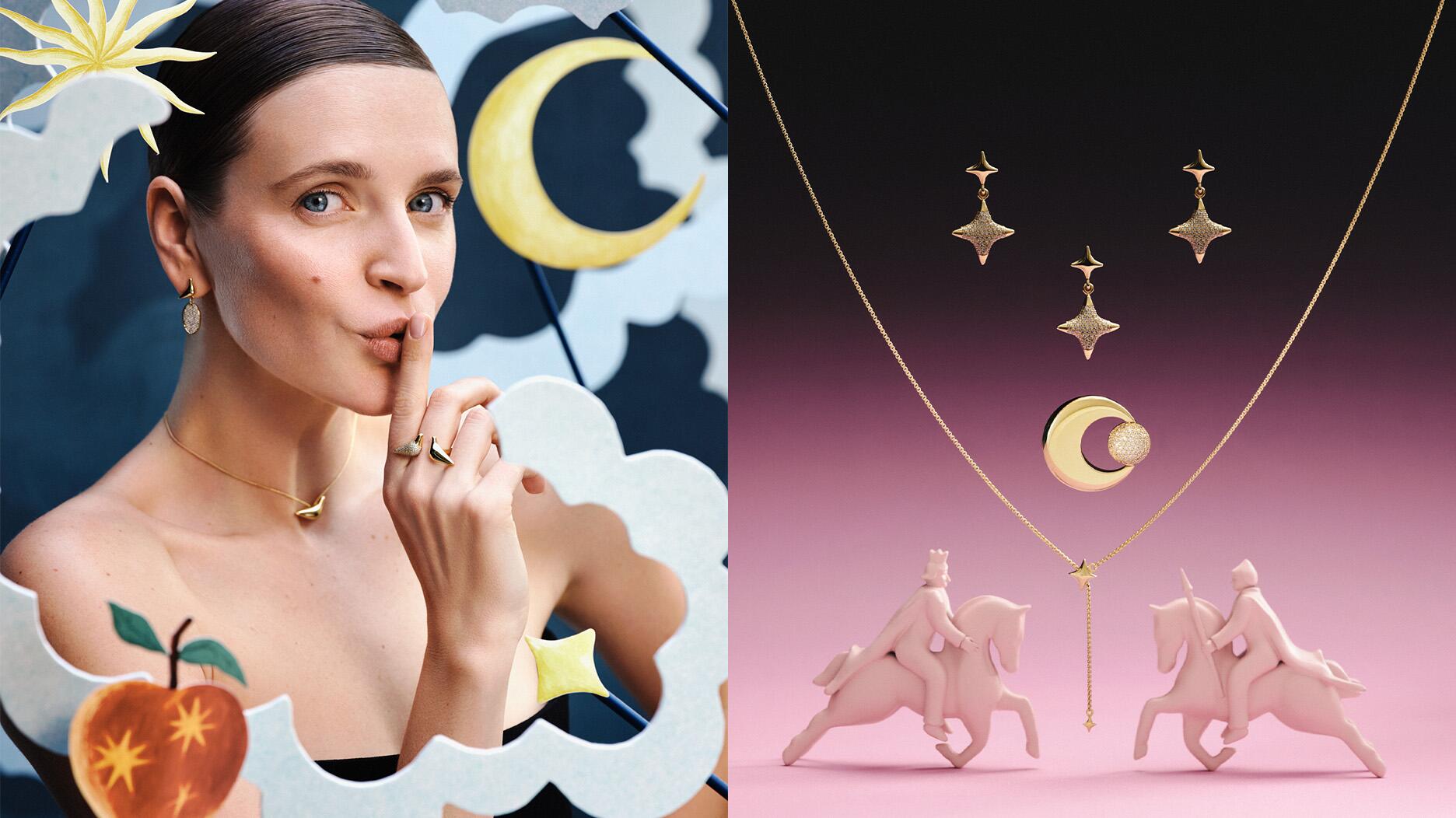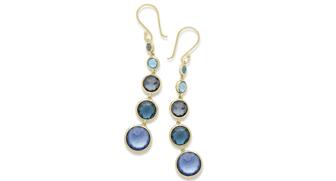The luxury goods company said founder Ippolita Rostagno will remain at the brand’s helm.
The history behind … Belle Époque jewelry
Susan Abeles of Bonhams gives insight into this era of jewelry design, created as a display of wealth during the early 20th century.
New York--The early 1900s were a time of peace and prosperity in the United States and, for many, also a time of wealth, as small businesses grew and factory output flourished.

Susan Abeles is the director of U.S. jewelry at the auction house Bonhams in New York. She recently took the time to speak with National Jeweler about Belle Époque jewelry, its history and how much it is worth today.
What is Belle Époque jewelry? Belle Époque jewelry was created during the first 15 years of the 20th century, and was inspired by motifs popular during the rule of Louis XIV--bows, swags (wreaths or garlands of fabric) and wreaths were favored.
This jewelry was fashioned with pale-colored gemstones, like pearls and diamonds, into lavish necklaces, stomachers (the triangle-shaped panel used to fill the front of a woman’s dress), tiaras and earrings.
Platinum replaced heavier silver mountings, allowing gemstones to appear in delicate-yet-strong mountings that provided optimum light, airiness and natural beauty. “It was a time of elegance and opulence,” Abeles said.
Why was Belle Époque jewelry created? What was it used for? Belle Époque is French for “Beautiful Era,” because it was a peaceful and prosperous time. Progress in technology and advances from the industrial revolution brought wealth to all classes.
“Belle Époque jewelry was used to display this new wealth,” Abeles said. “Ladies dressed for evening in beautiful lightweight material of chiffon or satin, which were adorned with elaborate lace and beadwork. These diaphanous, high-waisted, less-fitted gowns with low necklines, short sleeves and long-gloved arms provided the perfect stage to showcase the jewels of this era.”
Long hair also was worn up and ornamented with jewels and feathers, while ladies’ necklines would typically display a natural pearl choker complemented by a sautoir or multiple strands of pearls.
When was it popular? “Belle Époque jewelry was popular from approximately 1900 to 1915.
“Today, jewels of this era remain collectible as they are rare and limited in number,” Abeles said. “Moreover, the value, rarity and appreciation for natural pearls continues to grow, creating
What other materials were used in Belle Époque jewelry? Aside from natural pearls and diamonds, fancy colored diamonds in yellow, pink and blue while aquamarine, topaz, demantoid garnet and rubies served as accent gemstones.
How much are Belle Époque pieces worth? The value of a piece is dependent on many factors, including material, design, significance, provenance, signature, market and wearability, Abeles said, noting that prices can range from $20,000 and up, sometimes reaching more than $5 million.
How can a retailer add Belle Époque pieces to their jewelry offerings? “Of course, purchase them at auction,” Abeles said, jokingly.
Really, though, interested jewelers might want to look there first.
“Belle Époque is a very limited quantity of jewels that really have survived, and survived in their natural state,” she said. “The pieces are rare, and high-quality fine piece of any era remain collectible.
“Jewelers do recreate pieces in this style, and that’s remained popular, but for a retailer they either need to own or purchase Belle Époque jewelry from an estate, at auction or from a client. That’s the main way it becomes available.”
The Latest

Laura Burdese, who joined the Italian luxury brand in 2022, will take on the role in July.

The National Jeweler editors revisit the most noteworthy industry happenings and design trends from 2025.

How Jewelers of America’s 20 Under 40 are leading to ensure a brighter future for the jewelry industry.

Need a gift for the cat lover who has everything? Look no further than our latest Piece of the Week.


It purchased the “Grosse Pièce,” an ultra-complicated Audemars Piguet pocket watch from the ‘20s, for a record-breaking price at Sotheby’s.

The lab-grown diamond grower now offers custom engagement and fashion jewelry through its Kira Custom Lab Jewelry service.

Roseco’s 704-page catalog showcases new lab-grown diamonds, findings, tools & more—available in print or interactive digital editions.

Chandler got his start at Michelson Jewelers and has served as DCA president and CEO since 2001. He will retire at the end of the month.

The boutique is slated to open this week inside Terminal 8, offering pre-owned Rolex watches and more to international travelers.

Sponsored by Digital Monitoring Products

The special-edition egg pendant ingested in a New Zealand jewelry store was recovered after a six-day wait.

Associate Editor Natalie Francisco plays favorites with Piece of the Week, selecting a standout piece of jewelry from each month of 2025.

The “Love and Desire” campaign is inspired by the magic that follows when one’s heart leads the way, said the brand.

Two awardees will receive free tuition for an educational course at the Swiss lab, with flights and lodging included.

Berta de Pablos-Barbier will replace Alexander Lacik at the start of January, two months earlier than expected.

Sotheby’s held its first two jewelry sales at the Breuer building last week, and they totaled nearly $44 million.

Winners will receive free registration and lodging for its fourth annual event in Detroit.

Here are six ideas for making more engaging content for Instagram Reels and TikTok, courtesy of Duvall O’Steen and Jen Cullen Williams.

The honorees include a notable jewelry brand, an industry veteran, and an independent retailer.

Carlos Jose Hernandez and Joshua Zuazo were sentenced to life without the possibility of parole in the 2024 murder of Hussein “Sam” Murray.

Yood will serve alongside Eduard Stefanescu, the sustainability manager for C.Hafner, a precious metals refiner in Germany.

The New Orleans jeweler is also hosting pop-up jewelry boutiques in New York City and Dallas.

Set in a Tiffany & Co. necklace, it sold for $4.2 million, the highest price and price per carat paid for a Paraíba tourmaline at auction.

The jeweler’s “Deep Freeze” display showcases its iconic jewelry designs frozen in a vintage icebox.

Take luxury gifting to new heights this holiday season with the jeweler’s showstopping 12-carat sphene ring.

This year's theme is “Unveiling the Depths of the Ocean.”




























